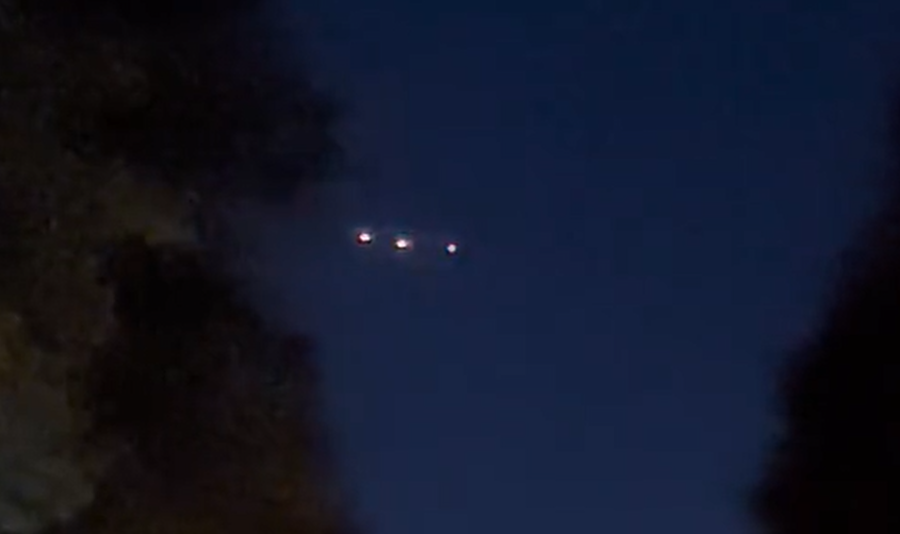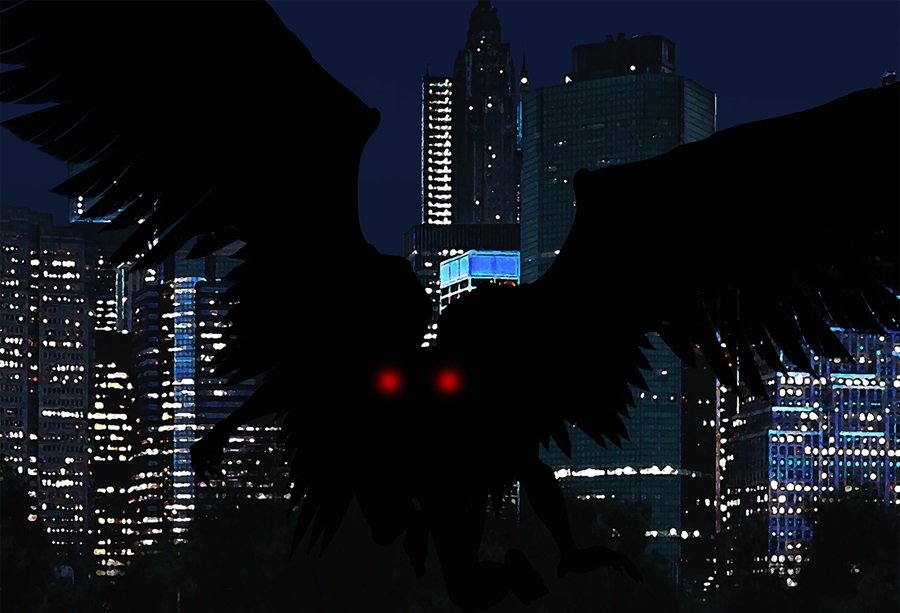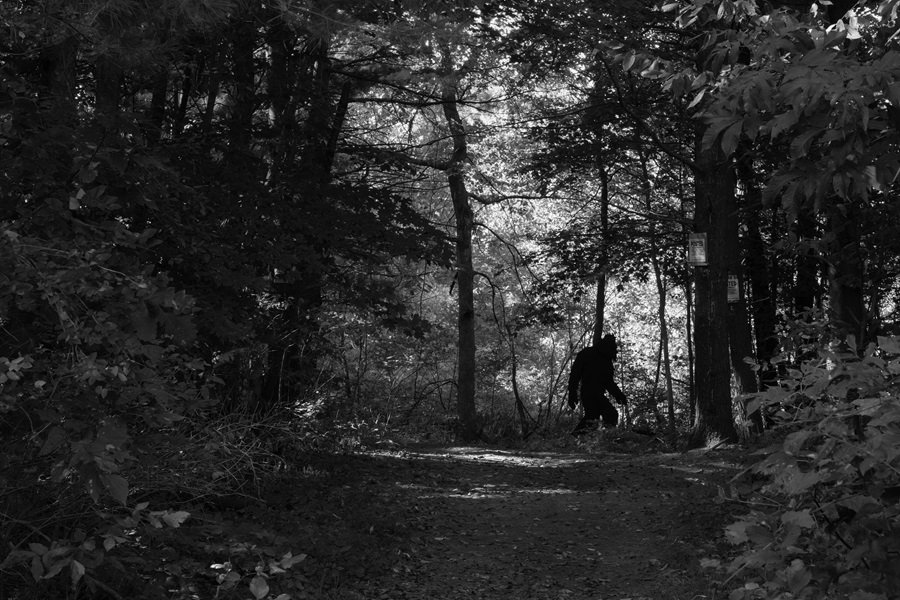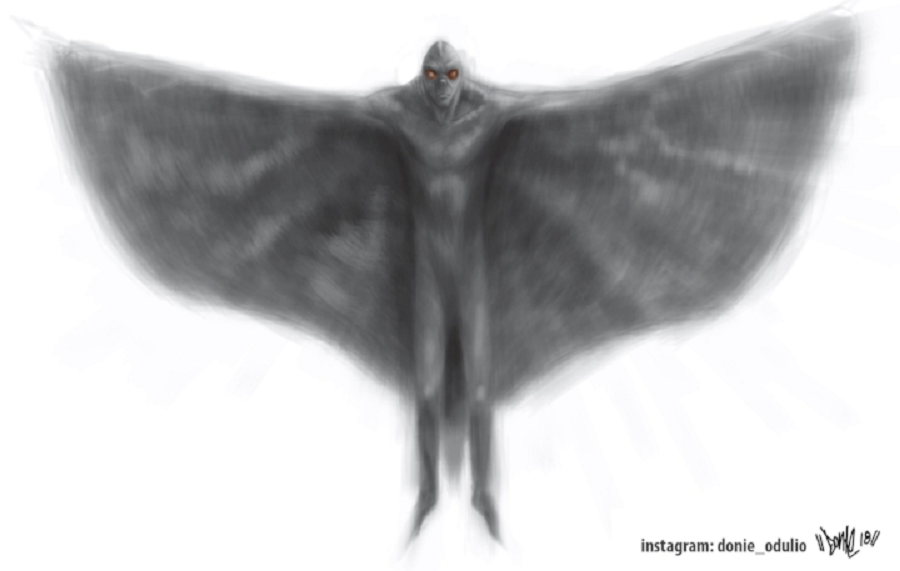Wildlife Biologist Skeptical of Latest 'Tasmanian Tiger' Footage Out of Australia
A still image from the video shot by Milde. (Jessie Milde)
Nick Mooney, Tasmanian wildlife biologist and honorary curator of vertebrate zoology at the Tasmanian Museum and Art Gallery, has once again stepped in to cool off any excitement over the latest purported Tasmanian tiger video to come out of Australia.
The video, shot by Jessie Milde, was taken in the Adelaide Hills of Belair National Park in South Australia.
Milde was walking with her son and sister when they spotted the unusual animal.
"We saw this thing starting to move across the road, and to start with, it's a bit strange, you sort of go through a bit of a thought process in your head, and it's like, oh, that's a bit of a weird looking kangaroo," she told ABC News. "Then I thought it's a really scraggy looking dog. But then it got a bit closer to us and I thought, no, it's not a dog either. It had a really weird gait to it, a sort of lolloping almost movement."
According to Milde, her sister thought the animal was a Tasmanian tiger, also known as a thylacine.
"That's the closest thing that we could compare it to, and then she went on to say that there had been reports on the Blackwood community Facebook page of people seeing some strange things in the national park," Milde said. "It was bigger than a fox, but not as big as a massive dog, but it definitely didn't look like a fox. The tail was completely different, its back was really sloped down and its head was a completely different shape."
Regardless of those accounts, Mooney remains skeptical that any thylacines are roaming the woods of Belair National Park.
In fact, he’s almost certain that what Milde and her family saw was simply a fox.
"It's got all the hallmarks of a fox with mange; it's lost a lot of hair off its tail, I think, [and] it's got very large ears like a fox," he said. "The movement when scooting to the left is a quick walk breaking immediately into a trot exactly like small canids and cats do. It's very unlike any marsupial I know, including the walking thylacine in the old movie.”
"I've seen a number of these sorts of videos and they're usually [filmed] with a phone, so they're not the definition of excellent," he added. "It's a pity there's not more detail but that's what makes these interesting, isn't it? The lack of detail."
In Mooney's opinion, it is "virtually impossible" for surviving thylacines to still exist in the wild.
"As far as we can tell thylacines were extinct on the mainland 2,000-4,000 years ago, a long time ago," he said.
However, on the island of Tasmania, they survived for much longer.
The last known thylacine, Benjamin, died in captivity in 1936, although the species held their status as an endangered species until the 1980s, and many scientists believe there is a strong possibility that some survived in the wild into the 1960s—although no hard evidence exists to support that hypothesis.
This isn’t the first evidence thought by some to represent a surviving thylacine that has been examined by Mooney, and so far, he’s proposed alternative explanations for them all.
In 2017, he concluded that footage of a supposed thylacine captured on the island of Tasmania by the Booth Richardson Tiger Team (BRTT) was more likely to represent a spotted quoll.
And he posited that the animals captured on camera in 2021 by Neil Waters—president of the Thylacine Awareness Group of Australia (TAGOA)—were “very unlikely to be thylacines and were most likely Tasmanian pademelons.”
Despite this, Mooney encourages others to continue their quest for the Tasmanian tiger.
"Just because I have an opinion that it's not a thylacine, I would tell people don't let that hold you back. Go and try and get some better pictures," he said.
And hope persists that someone will, since videos of potential thylacine sightings come out of Australia with relative frequency.
In 2017, trail camera footage and pictures were released by the Thylacine Awareness Group of Australia in the same month a schoolteacher claimed that he had taken a video of a thylacine while filming the sunrise, and later that year a trio of investigators claimed to have captured footage of a Tasmanian Tiger. Then, in June of 2018, a Sydney man shared footage from his home surveillance camera of a peculiar animal that some thought resembled a thylacine, followed by a farmer who, in January of 2019, snapped a cellphone photo of what he believed could be a Tasmanian tiger while out walking near Clifton Springs in Victoria, Australia.
To report your own encounter with the impossible, reach out to us directly at the Singular Fortean Society through our contact page.
If you enjoyed this article and would like to support the Singular Fortean Society, please consider becoming an official member by signing up through our Patreon page—membership includes a ton of extra content and behind-the-scenes access to the Society’s inner workings.





















